Going back through my nature notes for the past year was quite pleasing, it set off memories of special moments and great experiences and I was pleased with how often I managed to get out, although it’s never enough. The difficult part is choosing which of those many experiences can be counted as ‘highlights’ (a vague and loose term) to be mentioned in this blog post. I can’t recount everything here, especially as I’d just be repeating a lot of what I’ve already written in this year’s posts – even though, really, every single wild plant/animal/fungi that I had the pleasure of seeing counts as a highlight to me.
At the time of writing (and unlikely to change) my British bird list for 2017 stands at 173, (bearing in mind I don’t count heard-only birds) a number I’m quite happy with, as it is the 2nd highest year-count I’ve achieved so far. Of those 173 species, nine were British-firsts, and of that nine, five were lifers (birds I’ve never seen anywhere before). Probably the best experience of the year though, in birding terms at least, was my trip to Spain where I saw 157 bird species – a massive 30 of which were lifers! Beside birds, I saw three new British butterfly species, two new dragonfly species and 24 new moth species, not to mention all the wildflowers I saw too. This was also the year I started my pan-species list for the UK (currently at 1,020) so I added many ‘new’ species of various organisms to that list, many of which I have probably seen before but never made a note of it until now.
So, starting in January the highlights included getting a new personal best of 83 bird species on the Sussex new-year’s bird race, fantastic views of my 2nd-ever Waxwing – a lone bird feeding on berries in my local town centre – then a British first for me in the form of a male Serin near Newhaven and also a brief but exciting glimpse of a Great-grey Shrike on Ashdown forest.
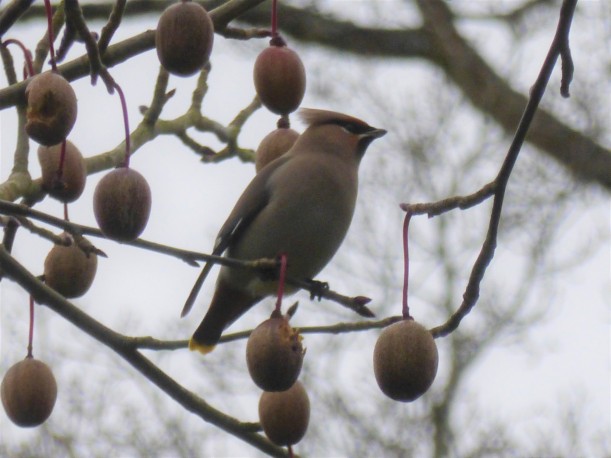
February was quiet, but even so, I had the best and closest views of multiple Waxwings, in a tree at Wakehurst Place in Sussex, that I have ever had – which was very satisfying as these are beautiful creatures which are irregular down south. March was notable for sightings of both an Adder and two Grass Snakes at a local park (not on the same day) which are not rare but nonetheless I usually only see a handful each year so they are always a highlight.
With the proper arrival of spring in April things started to kick off with my first Swallows of the year on the 2nd and superb views of both a Short-eared Owl and a Barn Owl at Beeding brooks one evening. On a walk around Ambersham common I also had brilliant views of a group of Crossbills, only the second time I’ve seen this species, as well as some Dartford Warblers which are always worth mentioning. At Buchan park I also saw one of my favourite insects – the Green Tiger Beetle – on the heath there.
Then of course at the end of the month was my trip to Spain, which you can read about in detail here, but some of the very best birds I saw on that trip were Rollers, Collared Pratincoles, Purple Swamphens, Calandra Lark, Red-necked Nightjars, Western Bonelli’s Warbler, Montague’s Harriers, Great Reed Warbler, Penduline Tit, Black-winged Kite, Golden Orioles, Rock Thrush, Little Swifts and Slender-billed Gulls among many others. It was also really good to see some Spanish insects such as the glorious Two-tailed Pasha butterfly and Jewel-beetles.
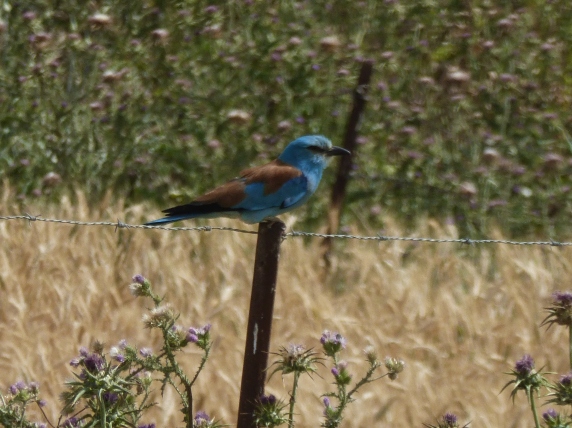
In May I saw a group of Woodlarks in West Sussex, not a species I see every day, or even every year, so it was nice to see this increasingly scarce bird. Moving away from birds a bit now, I achieved a goal of mine when I found a shed Fallow Deer antler at Knepp estate (it now sits on my desk) and I was chuffed to come across a beautiful Wasp Beetle on the South Downs on a walk. I saw a new dragonfly species at Buchan park in the form of some Downy Emeralds – which are a marvelous glittering, metallic green colour.
On a day-trip to Minsmere RSPB reserve in June, during which I saw many lovely birds, I must make a special note of some Bearded Reedlings I saw there as they were the only ones I saw all year and they are quite wonderful animals. A failed trip to see Nightjars on Ashdown forest wasn’t a total failure as I managed to see both a Cuckoo and a Woodcock – tricky birds to pin down these days. I did have a successful moth trapping session in June with four new species, including a Figure-of-eighty, a Scarce Silver-lines and a Barred Red, which are all beauties. On the subject of Lepidoptera, I did see a White Admiral at Buchan park this month, the only one of the year and the first I’ve seen in several years, so a fab sighting. At the end of the month I did manage to eventually catch up with some Nightjars on Ashdown.
July was busy, in a wildlife sense, as I saw my first Forester moth and Dark-green Fritillary at Cissbury ring on the South Downs (two much-wanted species), I saw another Grass Snake in the Arun valley, I hunted down some Purple Emperor butterflies at Knepp estate and I went on holiday to Devon. When I was in the fair county of Devonshire, I was most privileged to see my first ever Golden-ringed Dragonflies, a delightful and pretty species that has long evaded me. I also found some rare longhorn beetles (Luptera aurulia) which were very impressive, and it was quite amazing to watch a pod of Bottlenose Dolphins swim past a headland I was seawatching from (during which I also saw Manx Shearwaters for only the 2nd time). Devon also got me my first British Cattle Egrets and first British Wood Sandpipers – both superb birds and long-awaited ticks.
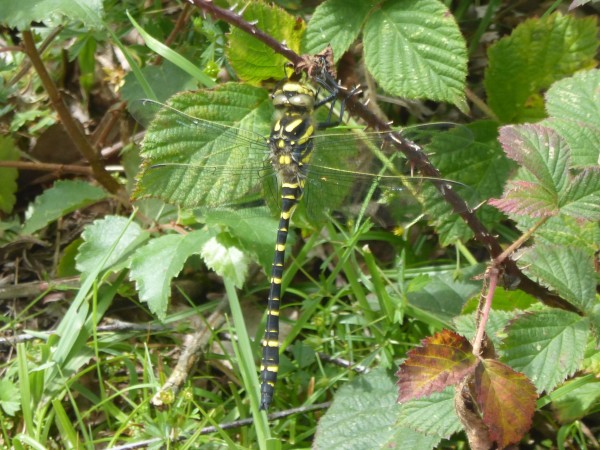
August was good for Lepidoptera with my first ever Silver-spotted Skippers, Adonis Blue, Brown Hairstreak and Burnished Brass moth as well as a marvelous sighting of two Hummingbird-Hawk Moths on a buddleia bush. Then September came around and it was all about birds again with both a Long-billed Dowitcher and a Bonaparte’s Gull in Kent (the latter a first for me), then an American vagrant in the form of a Baird’s Sandpiper in the Cuckmere valley, also a first and I unusually saw it from a canoe. I also saw my first Goshawks in donkey’s-years at a site in West Sussex, which was very exciting as they are increasing their population in the county.
October brought the Hawfinch irruption into the UK, and I jumped on the proverbial band-wagon (or should that be bird-wagon?) by going to see a big flock of them at Rewell wood in West Sussex – the most I’ve ever seen of this fantastic, yet sadly scarce, bird. I also enjoyed going hunting for Brown Hairstreak eggs on blackthorn bushes and was pleasantly surprised to find good numbers near my home.
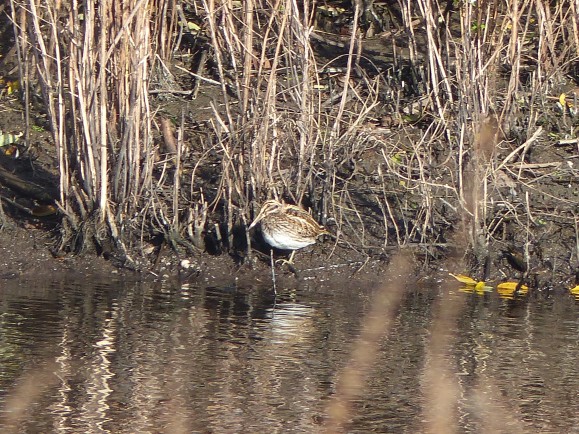
November will forever be remembered, not for Guy Fawkes, but for the finding of my first-ever Jack Snipe after years of fruitless searching with my friend John. That was one of the best days of the whole year. The month was further improved by a trip to Pagham harbour where I saw my very first Velvet Scoter as well as a very obliging Glossy Ibis – a British first for me and a cracking one at that.
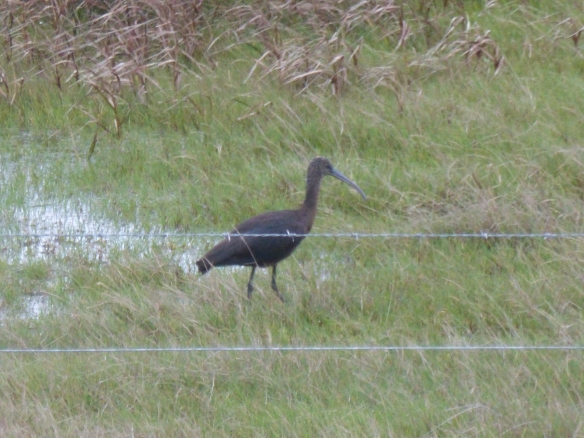
The year ended with another lifer for me in the form of three gorgeous Snow Buntings in Kent on the 16th December, making a very satisfying end to 2017. I’ll wrap up now with a great big thank you to both my friend John and my dear mother for carting me around the UK (and Spain) and sharing many of these wonderful wildlife experiences with me throughout the year, I wouldn’t have seen half of these species without their help. And also a thank you to all my readers, I hope you had a good year and I pray 2018 will be grand for all of you.


January 15, 2018 at 1:14 pm
Hi Elliot, What’s your reason for not counting species unless you have set eyes on them?
Cliff
LikeLike
January 15, 2018 at 1:27 pm
Hi Cliff, interesting question, obviously I will record birds I have only heard to Birdtrack or for a survey so that the data can be used for science, but for my personal list I don’t count heard-only. It’s how I’ve always done it, because I suppose up until fairly recently I couldn’t always be 100% confident in my call/song identification skills so there was always an element of doubt unless I’d also seen the bird. I just really want to say I’ve seen everything on my list, even if some aren’t much to look at, maybe it has something to do with how I’m a very visual learner and I like to be able to visualize things in my head. I did lapse once, when I ticked a heard-only Savi’s Warbler in Suffolk after trying to see it on 4 separate occasions without success – it’s a record I’m still not entirely satisfied with today, even though the ID was absolutely certain, and I’d like to see one in Britain one day.
LikeLike
January 1, 2018 at 1:25 pm
Finally caught up with the many blog posts loitering in my inbox and recently shared a blog of yours over at my naturestimeline.StandUp4Nature Facebook page, should you care to view it.Have a great 2018, young Elliot.
Take care now, and Best Wishes.
Tony Powell and naturestimeline
LikeLike
January 1, 2018 at 9:45 pm
Hey thanks Tony, glad you liked the posts and also thanks for sharing my post – I’ve liked your facebook page, looks good. Happy New Year!
LikeLiked by 1 person